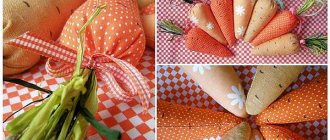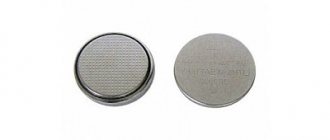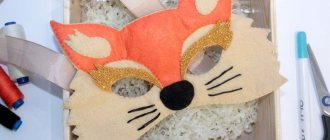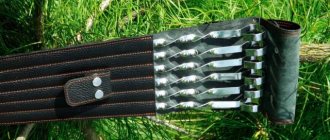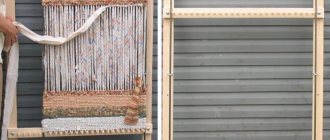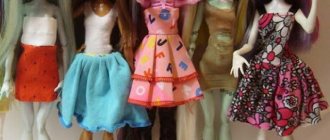- November 20, 2018
- Needlework
- Marusya the Cat
Fashion today is very diverse. There are no specific rules or restrictions; the main criteria for choosing products are their aesthetics and practicality. It is not always possible to find a thing that fits perfectly with the silhouette, since everyone has their own body shape. In this case, the skills of independent design and sewing of products will be useful.
People who do not have much experience can sew a down jacket with their own hands. This requires time, desire, imagination and a piece of your heart. Such clothes will be worn with pleasure, will warm you up in cool weather and will lift your spirits.
Advantages of handmade products
There are many advantages to a self-sewn product. These include:
- efficiency. The cost of a product made from independently selected materials is much cheaper than the price of a finished product;
- originality. Materials are selected according to your own taste and discretion; repetition of a model of a similar color and style is excluded;
- practicality. You can sew a down jacket with your own hands from an old product that has already lost its presentation. To do this, it is enough to decorate the model with new elements or change the style;
- individuality. The product will be tailored to individual measurements, taking into account the specific size and characteristics of the figure;
- great time. Sewing calms the nervous system;
- new hobby. If the first attempt is successful, there is a chance to thoroughly master this craft and begin sewing more complex models. Perhaps this activity will become not just a hobby, but also a future profession.
Drawing selection
The windbreaker pattern is designed on the basis of the basic drawing. It can be obtained in several ways.
- Retake parts from an old jacket or sweater, the cut of which you like and suits. You need to rip the product apart at the seams, transfer the outlines of the parts onto paper, and then onto fabric for sewing a new windbreaker.
- Use ready-made layouts that can be adjusted to individual sizes, printed on standard A4 paper and combined into a single diagram.
- Build an individual model, starting from the basic pattern of the base of a sweater, jacket or jacket. Craftsmen who sew a lot design universal drawings to fit their sizes and modify them if necessary.
If you are new to this business, first practice on inexpensive fabric (calico, chintz). The time spent is compensated by savings on high-quality material that you would not want to spoil. It is also worth making a layout on tracing paper or graph paper before cutting the fabric. It will help you find out whether ready-made patterns are suitable for you and will give you the opportunity to correct mistakes in time.
The classic pattern of a women's windbreaker consists of several parts. They are all duplicated and made of lining material.
Construction details
- 2 paired parts for a shelf with chest darts.
- 1 back element - up to waist level.
- Details for the sleeve depending on the design (for example, two-seam).
- Variable details - hood, collar, pockets.
Preparation of the workplace
Before you sew a down jacket-blanket with your own hands, you need to take care of your workspace. This is a fairly large product, so it is recommended to find a place where it will fit when unfolded. A large cutting surface is required. It is recommended to place the sewing machine in such a way that there is enough free space around it (the down jacket must fit easily, then the seams will be even). Don’t forget about safety precautions (the chair should be comfortable, the workplace should have sufficient lighting).
Review of models of men's windbreaker jackets
In modern fashion, there is a large selection of models of such jackets, differing in their characteristics. Among the fashionable and popular images are the following:
- Classic windbreaker.
- Sports style, for training and professional sports.
- Military style. Suitable for people who want to stand out.
- With a narrowed waist.
- Made from denim.
These and many other models are in great demand and are very popular among young people around the world. We will look at the classic version of this product.
This is interesting: Jacket pattern (r 17-21 euros)
Materials and tools
A very important point when sewing a product is the selection of material. For the outer part, it is recommended to use a water-repellent fabric from the group of raincoat fabrics (polyester, polyester with cotton). This will extend the operation and wear resistance of the product, as well as retain heat in cool weather. To sew a winter down jacket with your own hands, you should use 2-4 meters of fabric with a width of 1.5 m. Consumption depends on size and height.
For the lining material, fabric based on viscose fibers is used. Its quantity will be approximately 1 meter less than the main one. The lining is matched to the color of the down jacket or made contrasting.
Various natural or synthetic materials are used as insulation. The choice depends on the customer’s preferences; the assortment of stores includes the following fillers:
- natural – camel or sheep wool, cotton. It has high heat-resistant qualities, but can come out through the fabric (especially around the seams) after prolonged wear;
- substitute - swan's down, bamboo;
- artificial – padding polyester, holofiber. It warms perfectly, but may roll down while wearing.
To sew a down jacket with your own hands using patterns, you also need to purchase flexible braid, a zipper (the size depends on the length of the product) and threads that match the color.
The tools you will need are:
- needles;
- scissors;
- tape measure;
- tracing paper, paper for patterns;
- tailor's marker (a simple piece of soap will do).
Features of fabric selection
Before sewing a windbreaker, you need to take a responsible approach to the selection of fabric. Whatever the style, clothing should fulfill its main purpose - to provide comfort in cool and humid weather. Therefore, the material must be moisture-resistant and at the same time hygroscopic so that it does not feel stuffy. Today, manufacturers produce many technological materials - for example, Nylon Ottoman, which does not allow water to pass through and promotes the effective removal of water from the body. A classic raincoat fabric would also be a good choice.
If you plan to wear the item in dry, cold weather, you can use natural dense fabrics - corduroy, fleece, knitted fabric. It is worth providing an insulated lining or an additional inner layer of fabric so that it is suitable for the late off-season. The hood is traditionally made of the same material or soft cotton. The cuffs and elastic band are made of elastic knitwear.
Materials and tools:
- main fabric (about 2 m);
- lining fabric (about 2 m);
- zipper for the entire length of the product;
- buttons, buttons for placket, pockets;
- dress elastic, laces;
- adhesive material;
- threads, pins, needles and sewing supplies.
It is also necessary to take into account the type of fabric when cutting parts. Corduroy is cut in one direction so that the pile moves from bottom to top. If you do not follow this rule, individual parts may shimmer and play with different shades in the light. When sewing knitwear or other materials with fraying edges, you should first process them on an overlocker or sew seams with closed edges - for example, linen or “locked” seams. Having chosen the fabric, you can start modeling the pattern.
This is interesting: Pattern Children's windbreaker-raincoat (size 98-170)
Description of the down jacket-blanket model
A practical and elegant down jacket-blanket can be an excellent option for sewing outerwear. It is quite easy to make as the pattern consists of a large square with cutouts for the sleeves. The down jacket is complemented by a large collar, which will replace the hood in windy, cool weather. This model can be presented with a belt, patch or internal pockets, with a zipper or buttons.
How to model a windbreaker style?
At the modeling stage, you should consider the shape and presence of pockets, zippers, stripes and other decor.
Pockets
Types of pockets, they can be:
- invoices of various shapes (“kangaroo”, round, square, simple);
- internal;
- with valves (in safari or casual styles);
- briefcase pocket (large in size, can be gathered and with flaps);
- pockets in the seam are open or with zippers (on the sides);
- welt pockets (with leaflet, flaps), etc.
Cuffs
The sleeves can be made of ribbed fabric, you can turn the same fabric or insert a wide elastic band.
The models look interesting if you put a wide elastic band inside. Stretch it twice and stitch every 2 cm.
Cut out the linings
For summer, windbreakers without lining fabric are possible. For warmer models, you can use a silk lining or sew on a thin layer of padding polyester .
The pattern is the same; first, all the parts of the upper part of the windbreaker are sewn together.
Then the lining is assembled in exactly the same way, after which the 2 parts are joined together.
Important! Assembly order: start connecting both necks, then along the front cut . The sleeves are connected last.
For aesthetics, they are sewn through a small hole, which is left in only 1 sleeve. Carefully sew up the 2nd sleeve.
The lining is cut out from the main fabric and duplicated with non-woven fabric for density.
Pattern
It’s very easy to sew a down jacket using padding polyester with your own hands. The pattern will have the shape of a rectangle with parameters depending on the person’s measurements. For size 44 it will be 2x1.5 meters with a length of 102 centimeters. To create a pattern, the following indicators are required:
- The shoulder seam is equal to the width of the shoulder from the armhole line;
- the width of the back is measured by a segment of the width of the back at shoulder level plus 5 centimeters;
- collar width – 24 centimeters;
- The width of the product at chest level is the size of the chest circumference plus 20 centimeters;
- waist width – waist circumference plus 32 centimeters;
- the width of the product at hip level is the circumference of the hips plus 15-18 centimeters;
- arbitrary length of the product, laid out vertically;
- Make a sleeve pattern separately. Add 1.2 centimeters in width on each side;
- Cut pockets from leftover fabric.
These parameters are designed for a product made from already quilted material.
Taking measurements
You can use an old sweatshirt, jacket, sweater or other clothing as a basis . But in order for the windbreaker to fit perfectly, it is better to take measurements and draw a pattern. They are especially important if you want to sew an elongated fitted model.
The measurements are always the same: waist, hips, chest circumference , shoulder width is needed as well as sleeve length and necessarily the length of your product.
Windbreakers do not have darts , which are required for a dress or blouse (on the chest or waist) . This is their main feature, which will facilitate the creation of patterns.
Attention! The length of the sleeve is measured from the top of the shoulder through the elbow (the arm should be half bent) and 5-6 cm below the wrist. Otherwise, the arm will be short in the finished product!
Step-by-step instruction
We offer a master class on how to sew a down jacket with your own hands:
- Measure out the required rectangles from the outer fabric and lining. It is worth remembering that when the lining is filled, the product becomes denser and decreases in size. The parameters of the rectangle should be sufficient to place a full pattern on them.
- Make seams around the perimeter on three sides, with the fabrics folded right sides together.
- Turn the product inside out and distribute the filling evenly inside.
- Quilt the product, do not forget to stitch the fourth side.
- Place the patterns on the material, leaving 1.5 centimeters for seam allowances, cut out the parts;
- Finish the edges for the armhole allowance with flexible braid of a similar color to make the down jacket reversible. The insulation is removed at the firmware site.
- Sew the sleeves into the armhole.
- Sew the shoulder seams and collar details, placing the fabric on the right side. Sew a ribbon on the wrong side to hide the seam.
- If the model has pockets, carefully stitch them.
- Sew buttons, having previously prepared loops for them from strips of fabric.
- If there is a zipper, you should not fasten it with pins; it is better to sweep everything first and then stitch it. A very important point is to distribute the zipper at least one centimeter above the length of the down jacket.
- At the end of the work, all edges should be processed. To do this, you need to use the braid again or fold the edges inward by 2 centimeters and then stitch them together.
How to cut a women's windbreaker?
Let's take a step-by-step look at how to create a pattern in the simplest way. A novice craftswoman can easily handle it.
Cut out the shelves
First, you should create a pattern for the shelves on paper or newspaper, but ideal templates are best made on graph paper.
Our drawing is a rectangle.
The short
sides of the rectangle (A-D) should be equal to the half-circumference of the chest + 5-10 cm, so that the product fits the figure freely.
But please note that a lot depends on the style of windbreaker you choose. The long sides of the drawing (D-N) will accordingly be equal to the length of the future product.
How to make
a windbreaker pattern for women ?
- We start from the top of the constructed drawing. So at a distance of 25-30 cm, and with a large size you need 35-40 cm, we draw a straight line. This will be the chest line (B-C).
- Then the resulting straight line must be divided: i.e., the width of the back and the armhole area (this is the half-circumference of the chest, divided by 4 + 2 cm). This will create the front shelf of the product.
- We are building the neck. You need to step back about 6 cm from the corner, then deepen it in front by 5-6 cm. Then draw a neck along the back, just 1 cm above the rectangle, you need to step back 4-5 cm from the corner.
- Next, shoulder seams from the extreme points of the constructed neckline To do this, we lower them by about 1.5 cm ( it is necessary to retreat from the top of the rectangle).
- Next, you need to find the middle of the armhole on the straight line B-C (chest line), to do this you need to lower the straight lines from the shoulders down. We make smooth semicircles to form an armhole.
- For a short windbreaker (above the hips), provided that the circumference of the hips is equal to the chest (hourglass type), the pattern is ready.
- If you have a “guitar” figure, i.e. the hips are wider than the chest volume, then you need to make a side cut flare (M-O) for the difference. Lower from the middle point of the armhole (M) to the sides by the difference.
Thus, we received patterns for the front and back of windbreaker .
Important! When cutting on fabric, do not forget to add 2-3 cm allowances on all sides.
Sleeves
Let's move on to the sleeve of the product. Professional cutters use different methods for constructing sleeve patterns. The main principle is that the sleeve cap should fit exactly into the armhole along the front and back.
To do this, the finished drawings of the shelves need to be aligned along the shoulders, then transfer the line of the resulting armhole of the product separately onto paper. Then we round it on the pattern at the shoulder.
Then along the top part you need to step back up 1.5 cm and round it smoothly. To control, take measurements so that it matches the length of the armhole .
Hood pattern
If you need a hood for your windbreaker, it’s easy to make.
You need to measure your head circumference : from the center of the forehead to the back of the head (you need to measure through the crown). Another measurement is the length of the hood, it is measured from the shoulder to the top of the head.
The drawing is also drawn in an equilateral rectangle, where they should be equal to the height of your hood and, of course, 0.5 of the circumference of your head.
The right edge of the drawing needs to be rounded (the area of the crown). Lower the line from the forehead by 2 cm and draw 2 parallel lines.
At the neck, raise the line 3-4 cm inside the drawing, smoothly moving to the edge. This ensures a good fit of the future hood and no folds will form on the back of the head.
Collar
Cutting out a collar for a windbreaker is much easier.
To do this, you will need a small strip of fabric, it should be equal to twice the height , as well as the width of the neck.
Good advice
To make the work high-quality and enjoyable, and the product to turn out beautiful and convenient, you should listen to the advice of professionals:
- To sew a two-in-one down jacket with your own hands, you need to use two colors. One will decorate the outside, and the other will decorate the inside. This will result in two wonderful products, identical and different at the same time.
- You can quilt a down jacket with different patterns: squares, diamonds, vertical or horizontal stripes, zigzags, etc. (as your imagination allows). You can simply limit yourself to a few seams to distribute the filler evenly.
- It is recommended to choose hypoallergenic fillers that can be washed. There will be no problems with them while wearing them, they keep their shape well and do not wear out for a long time.
- All lining pieces should be shorter than the outside, otherwise the lining will be visible from the outside.
- A new product can be made from an old down jacket. To do this, you need to rip apart all the parts of the coat or jacket and remove the filling. If the top is not too worn, you can make it wrong side out. And make the outer side from new fabric, also purchase new filling. The sewing technology is no different from making a new product. The work is made easier by the fact that you don’t have to design new patterns.
Cutting details
The classic DIY pattern for a women's windbreaker consists of several parts. Typically this is:
- Shelf - 2 parts;
- Back - 1 piece with fold;
- Collar - 2 parts;
- Sleeves - 2 parts;
- Patch pockets.
Important! Depending on the style you choose, you will also need collar pieces or hood pieces. Don’t forget that the main details - sleeves, back, shelves - also need to be cut out of lining fabric. The hem is cut from the main material and duplicated with non-woven fabric.
How to work with finished stitch
Buying a ready-made stitch is an excellent solution for those who want to save their time.
Among the assortment of our store there is an original Moncler raincoat, quilted with Isosoft insulation 250 g/m2. How to work with finished stitch? Here are some tips.
- During transportation, the material may become wrinkled and look completely different than in the store. To revive it, you need to remove it from the packaging, shake it and spread it on a flat surface, preferably overnight. The insulation needs to be “saturated” with air, then it will become lush again.
- If you don’t have time, you can start cutting. During operation, the material will also begin to return to its normal form and gradually straighten out. If there are creases in the material, the stitch may be ironed before cutting. But you need to be very careful: the material can accidentally melt or burn.
- It is better to cut quilted material facing sideways.
- The parts need to be laid out in one direction. Raincoat materials often have different shades, so we recommend arranging the parts so that the top always faces the same direction.
- The direction of laying out the parts can be chosen either longitudinally or transversely - this is not important in raincoat materials. Focus on the stitch pattern and in which direction you want it to appear in the product.
- Pay attention to stitch alignment. It is better when the pattern matches along the side seams, along the edge cut, as well as in other elements that are present in your product.
- After cutting, it is worth laying a line around the perimeter of the parts close to the cuts. This is necessary so that the stitch does not unravel during work.
- There is no need to wash the stitch before sewing - otherwise it will unravel. But the finished product can be washed, taking into account the recommendations. For example, we recommend washing quilted items from the GRASSER store on a delicate cycle without spinning at a temperature not exceeding 30 degrees.
Coat and jacket according to the GRASSER pattern№713
How to iron a raincoat
These tips will be useful both when working with already quilted material and with raincoat fabric without insulation.
- This material can only be ironed using an ironing iron.
- Do not use steam under any circumstances; it can damage the raincoat.
- Choose a low iron temperature, as high temperatures may cause the fabric to melt or shrink. Be sure to test the temperature of the iron on a sample - there is no universal advice for all raincoats.
- After working with the iron, let the raincoat cool; you can additionally smooth the material with a block or even the iron itself.
Coat and jacket according to the GRASSER pattern
№785
What should a baby's jacket be like?
For a walk to be enjoyable for a child, he must be able to move actively. Therefore, it is important to take care of comfortable clothes. Especially about the outerwear, which includes jackets.
Clothing requirements for children
- Things should provide freedom of movement, not constrain, and be comfortable.
- The best fabric is water-repellent and provides wind protection.
- Kids need to be offered beautiful wardrobe items to shape their aesthetic taste from a very early age.
- In addition to meeting the parameters of children, it is important to know for sure that the fabrics used in the product are environmentally friendly and safe for the baby.
Hand made is fashionable
Today trade offers various types of these products. But every mother knows that their price is considerable, but their useful life is short, because babies quickly outgrow their clothes.
However, it is not necessary to purchase a new thing! Mom can sew a comfortable jacket herself. At the same time, she will be able to replenish the children's wardrobe with things for a wide variety of temperature conditions.
We will tell you how to make a pattern to sew a jacket that both the baby and his mother will like.
Master classes on sewing raincoat fabrics with insulation
The first time sewing a product from raincoat fabric on insulation is both scary and difficult. If you doubt your abilities, we recommend watching our video tutorials.
- Master class on sewing a jacket with insulation using pattern No. 630. In the master class we show the technology of sewing a jacket with insulation, which is good for individual work. In addition to the detailed sequence of assembling the product, we give two options for processing a pocket with a zipper, and also share many other secrets that have been developed over the years.
- Master class on sewing a jacket using patterns No. 667 and No. 668. In this master class we will talk about modeling a product using insulation, as well as processing three types of sleeves. As a result, with one master class on the same pattern, you can end up with several completely different products.
- Master class on sewing a down coat using pattern No. 385. The master class combines all the classic knots of a coat with insulation. The processing method that we talk about in this master class can be used both in individual tailoring and in mini-production.
You can buy patterns for products made from raincoat fabrics with insulation in the GRASSER online store.
Stage 3
Cutting fabrics and preparing to assemble the product
After all the elements of the product are cut out, they proceed to the preparatory work.
All stitching lines on each part are transferred to the other side. To do this, place safety pins along the contours and trace them on the second part, while not forgetting to place control marks.
We must not forget about the center lines so that your product does not warp. A line is laid along them, the stitch length of which can reach 2 cm.
Now you can move on to basting. If the jacket is planned to have insulation, then immediately sew it together with a lining. Sweep away all the details, focusing on the control marks, which must match on all the parts.
Once all the main parts are connected, it is necessary to try it on to ensure a good fit on the figure, to clarify the length of the hem and sleeves. If everything is in order, then you can proceed to stitching - joining the parts with a permanent stitch.



